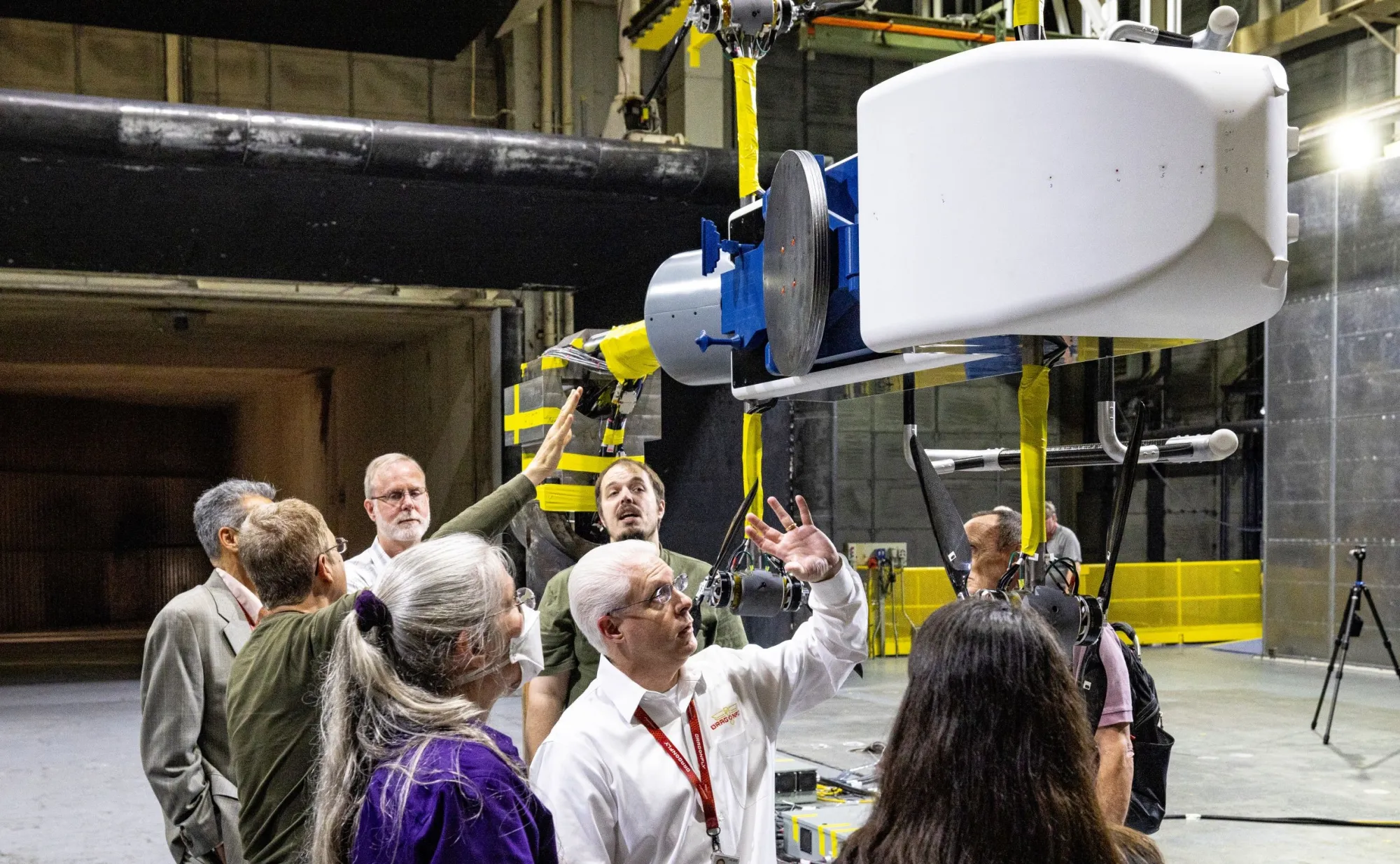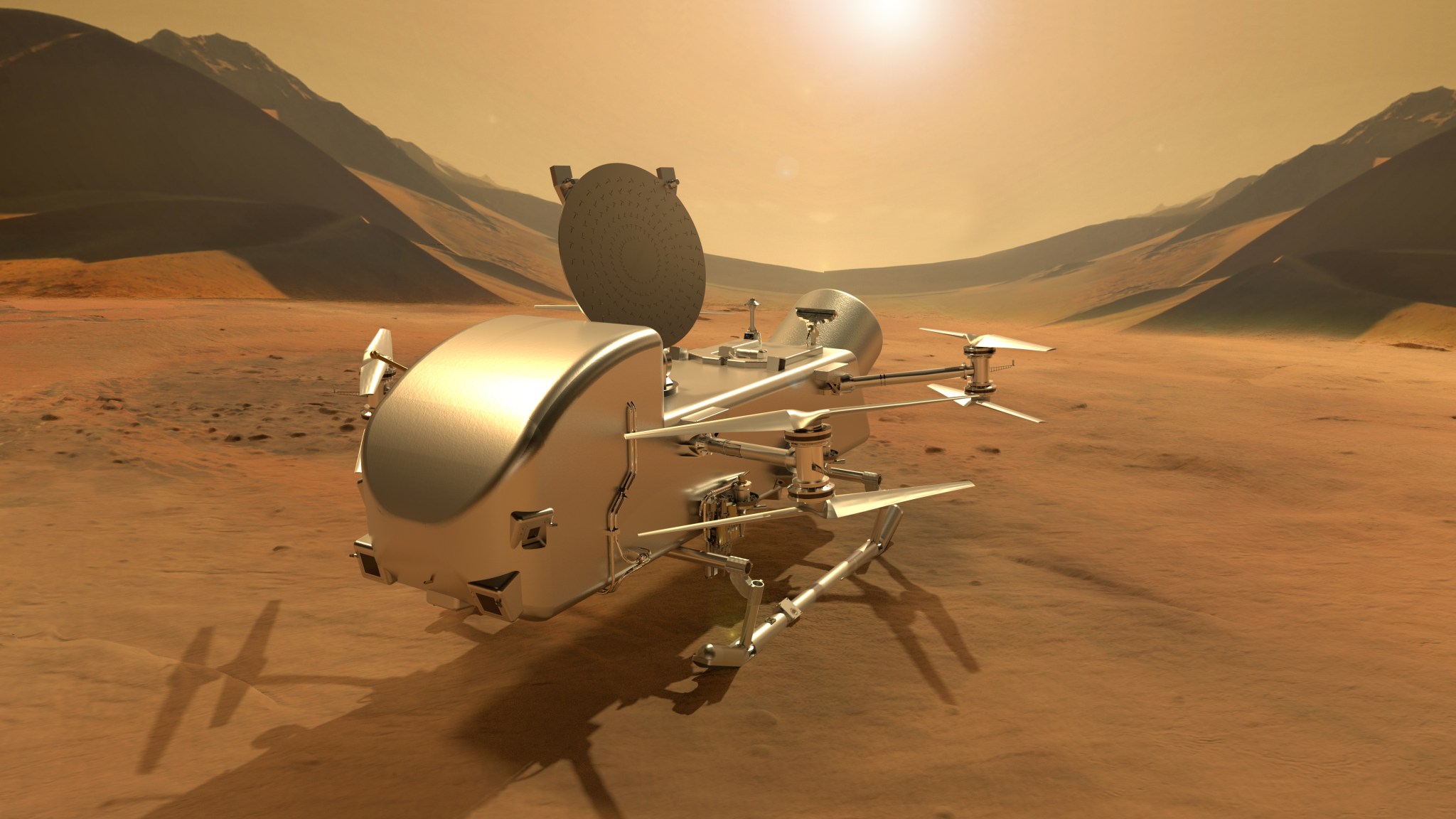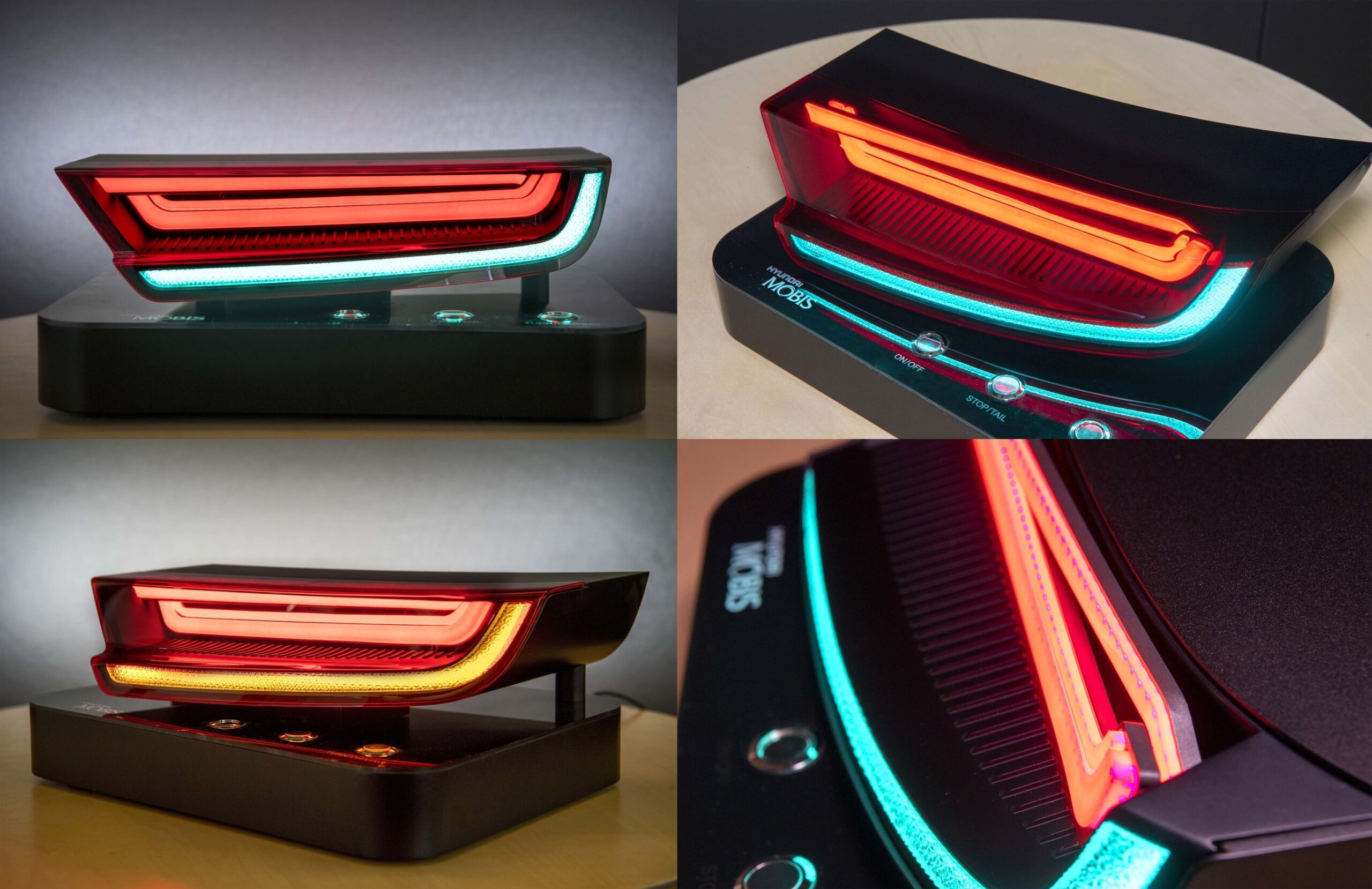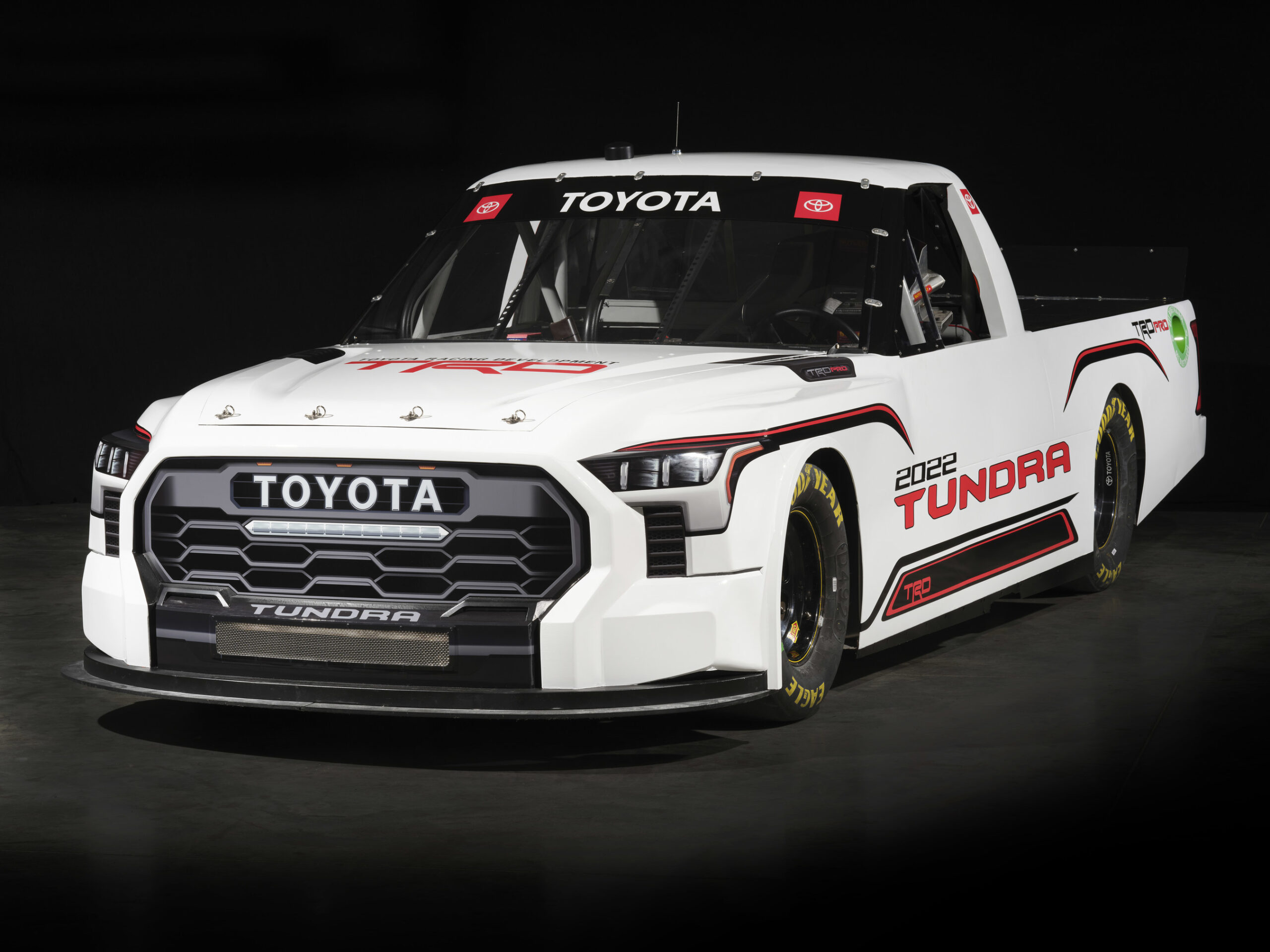NASA’s Dragonfly Tunnel Visions

With its dense atmosphere and low gravity, Saturn’s moon Titan is a great place to fly.
But well before NASA’s Dragonfly rotorcraft lander soars through Titan’s skies, researchers on Earth – led by the Johns Hopkins Applied Physics Laboratory (APL) in Laurel, Maryland – are making sure their designs and models for the nuclear-powered, car-sized drone will work in a truly unique environment.

Artist’s impression of the Dragonfly rotorcraft lander on the surface of Titan, Saturn’s largest moon and a major target in NASA’s quest to assess habitability and search for potential signs of life beyond Earth on worlds across the solar system.
NASA/Johns Hopkins APL/Steve Gribben
Dragonfly, NASA’s only mission to the surface of another ocean world, is designed to investigate the complex chemistry that is the precursor to life. The vehicle, which APL will build and operate, will be equipped with cameras, sensors and samplers to examine swaths of Titan known to contain organic materials that may, at some point in Titan’s complex history, have come in contact with liquid water beneath the organic-rich, icy surface.
To transport those science instruments across the moon, Dragonfly’s four pairs of coaxial rotors (meaning one rotor is stacked above the other) will need to slice through Titan’s dense, nitrogen-rich atmosphere. Four times in the past three years, the mission team has headed to Virginia to test its flight systems in one-of-a-kind facilities at NASA’s Langley Research Center in Hampton, Virginia.
Mission engineers have conducted two test campaigns in NASA Langley’s 14-by-22-foot Subsonic Tunnel, and two in the 16-foot Transonic Dynamics Tunnel (TDT). They use the Subsonic Tunnel to validate computational fluid dynamics models and data gathered from integrated test platforms – terrestrial drones outfitted with Dragonfly-designed flight electronics. They use the variable-density heavy gas capabilities of the TDT to validate its models under simulated Titan atmospheric conditions — one aerodynamic stability test of the aeroshell that is used to deliver the Lander to a release point above Titan’s surface and one to model the Lander’s rotors aerodynamics.
“All of these tests feed into our Dragonfly Titan simulations and performance predictions,” said Ken Hibbard, Dragonfly mission systems engineer at APL.
On its latest trip to NASA Langley, in June, the team set up a half-scale Dragonfly lander model, complete with eight rotors, in the 14-by-22 Subsonic Tunnel. Test lead Bernadine Juliano of APL said the campaign focused on two flight configurations: Dragonfly’s descent and transition to powered flight upon arrival at Titan, and forward flight over Titan’s surface.
“We tested conditions across the expected flight envelope at a variety of wind speeds, rotor speeds, and flight angles to assess the aerodynamic performance of the vehicle,” she said. “We completed more than 700 total runs, encompassing over 4,000 individual data points. All test objectives were successfully accomplished and the data will help increase confidence in our simulation models on Earth before extrapolating to Titan conditions.”
APL engineers are analyzing the 14-by-22 test data with mission flight team partners at the University of Central Florida, Penn State University, Lockheed Martin Sikorsky, NASA Langley and NASA Ames Research Center in Silicon Valley, California. Rick Heisler, the Dragonfly wind tunnel test lead from APL who heads the TDT test campaigns, said each trip to NASA Langley has given the team a chance to hone its technical models and designs and, specifically in the TDT, gain a better idea of how Dragonfly’s rotors will perform in Titan’s exotic atmosphere.
“The heavy gas environment in the TDT has a density three-and-a-half times higher than air while operating at sea level ambient pressure and temperature,” Heisler said, “This allows the rotors to operate at near-Titan conditions and better replicate the lift and dynamic loading the actual lander will experience. The data we acquire are used to validate predictions of the lander aerodynamics, aero-structural performance and rotor fatigue life in the harsh cryogenic environment on Titan.”
“With Dragonfly, we’re turning science fiction into exploration fact,” Hibbard said. “The mission is coming together piece by piece, and we’re excited for every next step toward sending this revolutionary rotorcraft across the skies and surface of Titan.”
Part of NASA’s New Frontiers Program, Dragonfly is scheduled to launch no earlier than 2027 and arrive at Titan in the mid-2030s. Principal Investigator Elizabeth Turtle of APL leads a mission team that includes engineers, scientists and specialists from APL as well as NASA’s Goddard Space Flight Center in Greenbelt, Maryland; Lockheed Martin Space in Littleton, Colorado; NASA’s Ames Research Center in Silicon Valley, California; NASA’s Langley Research Center in Hampton, Virginia; Penn State University in State College, Pennsylvania; University of Central Florida in Orlando, Florida; Lockheed Martin Sikorsky in Stratford, Connecticut; Malin Space Science Systems in San Diego; Honeybee Robotics in Pasadena, California; NASA’s Jet Propulsion Laboratory in Southern California; CNES (Centre National d’Etudes Spatiales) in Paris; the German Aerospace Center (DLR) in Cologne, Germany; and JAXA (Japan Aerospace Exploration Agency) in Tokyo.
Learn more at www.nasa.gov/dragonfly





